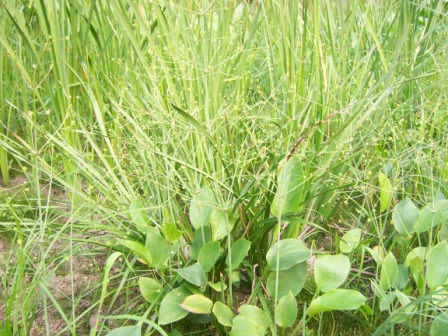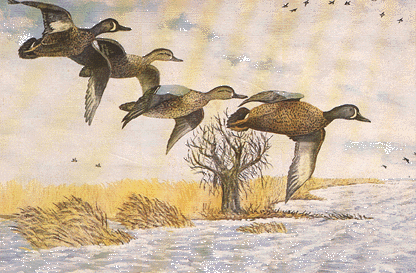
Water Plantain Seed
|
Water-plantains are wetland plants and found in
saturated soils and shallow water as well as marshes, wooded swamps, shrub
swamps and flooded farmland. When introduced to an area, water plantain can
rapidly reproduce. The plant is common to regions of northern Minnesota and
readily found on Lake Plantagenet This native perennial plant consists of
a rosette of basal leaves about 1' tall. The basal leaves are up to 7" long
and 3½" across (excluding the long petioles), and they are oval to ovate in
shape. Their margins are smooth, while both the upper and lower surfaces are
devoid of hairs. The leaf venation is parallel primarily, although there are
secondary veins that radiate sideways to provide a slightly wrinkly
appearance to the upper surface. The texture of these leaves is rather thick
and fleshy. From the center of the rosette, a large whorled panicle of
flowers develops during the summer that is up to 3' tall. This inflorescence
is heavily branched and more or less erect. The green flowering stalks are
hairless, and sometimes angular or finely ribbed along their length. At the
base of each group of whorled branchlets, there are 3 deciduous green bracts
that are lanceolate with elongated pointed tips. The small flowers are
individually about ¼" across. Each flower consists of 3 white petals, 3
green sepals, and 6 stamens. There is a small patch of yellow at the base of
each petal, while the center of the flower is green. For this species of
Water Plantain, the petals are about 50% longer than the sepals. The
blooming period usually occurs during mid-summer and lasts about a month.
Each flower is replaced by a flat whorl of seeds (technically, they are
achenes). Each flat-sided seed is longer than broad, with a tiny beak at the
top. The seeds are probably distributed by the movement of water. The root
system consists of a cluster of shallow fibrous roots and rhizomes. This
plant often forms colonies.
Price List |
|




